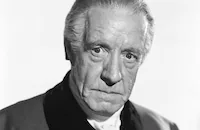The Office Wife

Brief Synopsis
Cast & Crew
Lloyd Bacon
Dorothy Mackaill
Lewis Stone
Hobart Bosworth
Blanche Frederici
Joan Blondell
Film Details
Technical Specs

Synopsis
Lawrence Fellows is a whirling dervish as the head of his own advertising agency, provoking the secret admiration of his 40-year-old secretary, Miss Andrews. The lady begins to suffer from an emotional strain, and Fellows gives her a leave of absence, replacing her with Anne Murdock, a comely young lass who formerly had been merely temporary help. Anne proves to be such a package of charm and wit that Fellows falls for her in a big way, thereby neglecting Linda, his wife. Mrs. Fellows, too, has been involved in an affair, and soon goes to Paris to break the tie that binds. The boss and Anne then merge into a permanent partnership, with the latter retaining all hiring responsibilities for any future girl Friday.

Director

Lloyd Bacon
Cast

Dorothy Mackaill

Lewis Stone

Hobart Bosworth
Blanche Frederici

Joan Blondell

Natalie Moorhead
Brooks Benedict
Dale Fuller
Walter Merrill
Crew

Photo Collections
Film Details
Technical Specs

Articles
The Office Wife
Before he knows it, however, Stone becomes living proof of his theory. When his bossy, love-struck secretary (Dale Fuller) can't go on after learning that Stone is to be married, he promotes a new one to replace her (Dorothy Mackaill, in a role originally meant for Constance Bennett). Mackaill falls for the now-married Stone in a big way, but since she can't bring herself to be a party to adultery, she eventually gives notice and plans to settle for marrying her boorish, idiotic boyfriend (Walter Merrill). Mackaill doesn't know that Stone's marriage is on the rocks, however, and it is up to her world-weary, wisecracking sister (Joan Blondell) to help save the day and make things right. As for Friderici, she is barely heard from again and seems to exist only to allow the movie to verbally establish its theme.
Despite its title, The Office Wife doesn't delve too deeply under its surface to say much about women in the workplace and society, though there is one humorously telling exchange that bears a mention. When, early on, Mackaill is informed by her supervisor Mr. McGowan (Hobart Bosworth) that she has been given a promotion, Mr. McGowan tells her: "Charm counts, but you got this on your brains. Don't forget that, Anne." "Indeed I won't, Mr. McGowan." "Now run along, fix your face."
In other words, charm most certainly does count!
For the most part, The Office Wife sticks to its soapy story and provides a reasonably entertaining pre-Code ride for its brief running time. The going is occasionally creaky, with stilted dialogue and awkward blocking that is often so typical of early talkies, but the performances of Mackaill and Blondell do much to make up for it. Blondell, in just her second feature, delivers the movie's funniest lines and is shown taking a bath and pulling underwear off and on. (Blondell's first feature job was Sinners' Holiday, 1930, in which James Cagney also debuted, although The Office Wife was released first).
Dorothy Mackaill, on the other hand, already had an established screen presence. Sadly forgotten today, Mackaill was a beautiful and popular star of the silent screen with an interesting personal history. Born in 1903 on the Scottish isle of Hull, she ran away from home at 14, determined to become an actress. She found work in London and Paris before moving to New York and becoming one of the most famous Ziegfeld Girls of the 1920s. After a part in The Lotus Eater (1921), opposite John Barrymore and Colleen Moore, Mackaill's movie career was off and running. She specialized in flappers while appearing in some 40 films in the decade.
Moving into talkies, she starred in such pictures as Kept Husbands (1931), Safe in Hell (1931) and No Man of Her Own (1932), with her stunning blonde looks and natural charisma commanding the screen every time. After Bulldog Drummond at Bay (1937), she retired - first to New York and later to Honolulu, where she lived out the rest of her life. She had fallen in love with the islands while there to shoot His Captive Woman (1929) and always wanted to return. In the 1970s, to honor her dedication to Hawaii, Honolulu declared "Dorothy's Day" and serenaded her at her hotel, the Royal Hawaiian.
Mackaill was married and divorced three times. The second marriage began not long after The Office Wife, but it only lasted three years. "He couldn't afford to support me," Mackaill told the divorce court judge in 1934, explaining that her husband objected to her working in motion pictures despite his lack of proper income.
Speaking years later of her retirement, Mackaill said, "When I left New York, I made up my mind I wasn't going to like Hollywood, and I never did. I used to walk out of the studio and feel depressed, and I finally made up my mind to quit my career while the career was going good."
Variety's review of The Office Wife was especially florid: "Sure fire. Everything everybody wants," the trade paper declared. "It kicks the pants off the Hays' quadruple code and yet remains so clean no censor can censor it... Maybe suggestion after all is the best always for the screen. It appears to win the audience while defeating the reformers, a double trick worth putting the researchers on... When you can mix up 11 o'clock night office hours with room keys and moonlight on the beach, to still be clean, that's some clean."
Look for up-and-coming child star Dickie Moore, aged 4, as a boy on the beach.
Director: Lloyd Bacon
Screenplay: Charles Kenyon, Faith Baldwin (novel)
Cinematography: William Rees
Film Editing: George Marks
Music: Alois Reiser
Cast: Dorothy Mackaill (Anne Murdock), Lewis Stone (Lawrence Fellowes), Natalie Moorhead (Linda Fellowes), Hobart Bosworth (J.P. McGowan), Joan Blondell (Katherine Murdock), Blanche Friderici (Kate Halsey).
BW-59m.
by Jeremy Arnold















